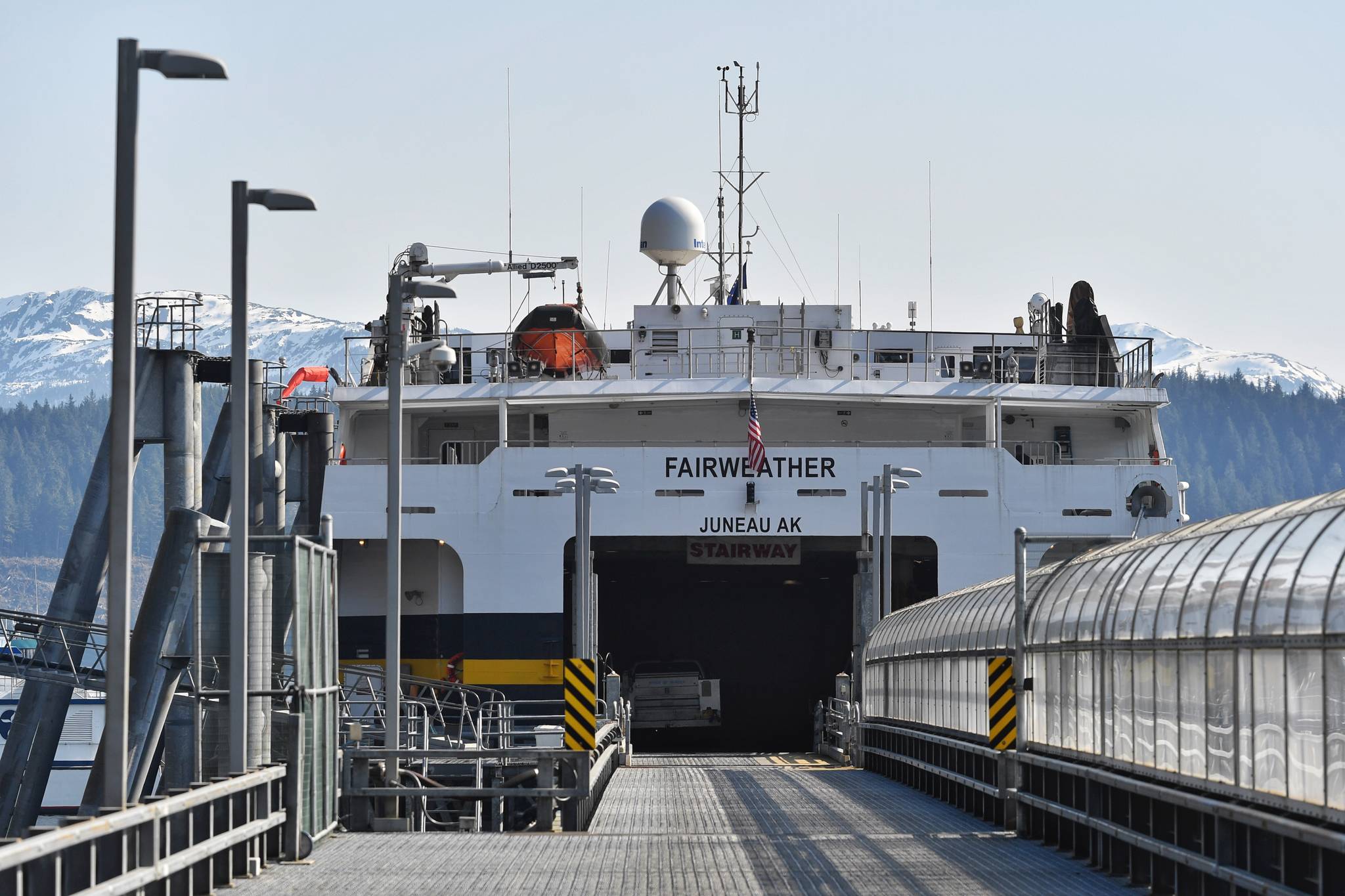The F/V Fairweather is leaving Juneau on Thursday. It might never come back.
The fast ferry will sail to Ketchikan on Thursday and be laid up in Ward Cove, Department of Transportation and Public Facilities Public Information Officer Aurah Landau said Tuesday. The department will then begin the process of selling it and the F/V Chenega, Landau said.
“Both fast ferries will be put up for sale in the next few months,” Landau said in an email.
The ferry’s staff will be reassigned to other vacant positions, and all non-essential equipment from coffee machines to artwork will be taken off the vessel. The staff will technically be laid off this month in accordance with union contracts, but there are enough vacancies on other ships that nobody will lose their job, Landau said.
[Ferry system braces for budget cuts]
It’s the same process the state went through when it sold the Bartlett and the Taku, Landau stated. The fate of the Fairweather has hung in the balance for quite some time. The ferry was laid up for the season in September, and at the time Capt. John Falvey (the general manager of the Alaska Marine Highway System) said it was uncertain what was going to happen to it long term.
The Fairweather is approaching 15 years old, and the state is bringing on at least one ship this year. The F/V Tazlina is ready to be deployed into Lynn Canal. Operating the Tazlina instead of the Fairweather, Landau said, is expected to save the state about $400,000 due to the lower cost of fuel.
“With completion of the Tazlina, and its deployment in Lynn Canal this summer, the Fairweather is no longer needed,” Landau said in an email.
[‘Bittersweet for Alaska’: Beloved ferry Taku just sold to a Dubai company]
The Tazlina is slower than the Fairweather and can only make one trip per day in Lynn Canal, but it can take 53 vehicles compared to Fairweather’s 31 vehicles, so Landau said it “can provide a similar level of service.”
The Alaska Marine Highway System’s financial struggles in recent years have been well documented. If it hadn’t been for an emergency bill passed by the Alaska Legislature in March 2018, the ferry system would have shut down in mid-April. In recent years, organizations including Southeast Conference and McDowell Group have teamed up to work on a reform plan to change the way the ferry system is run to make it more profitable.
In his Feb. 13 budget proposal, Gov. Mike Dunleavy proposed a 75 percent reduction in the AMHS budget. Under the proposal, the ferry system would stop running in October, and the state is looking to contract a researcher to look into the best way to move forward with the AMHS.
Employees, regular users of the ferries and many legislators have objected strongly to the proposed cuts.
[‘We’re not giving up our ferries’: Hundreds rally at the Capitol]
Money is a past, present and future problem for the ferry system, which Landau said helped spell doom for the fast ferries.
“AMHS has determined it cannot operate these vessels given current and anticipated funding levels, and the expense of long term storage is not justified,” Landau said via email.
• Contact reporter Alex McCarthy at amccarthy@juneauempire.com. Follow him on Twitter at @akmccarthy.

